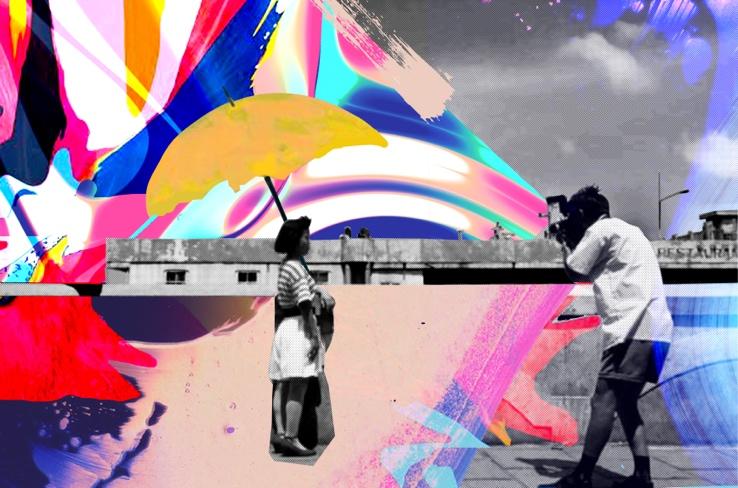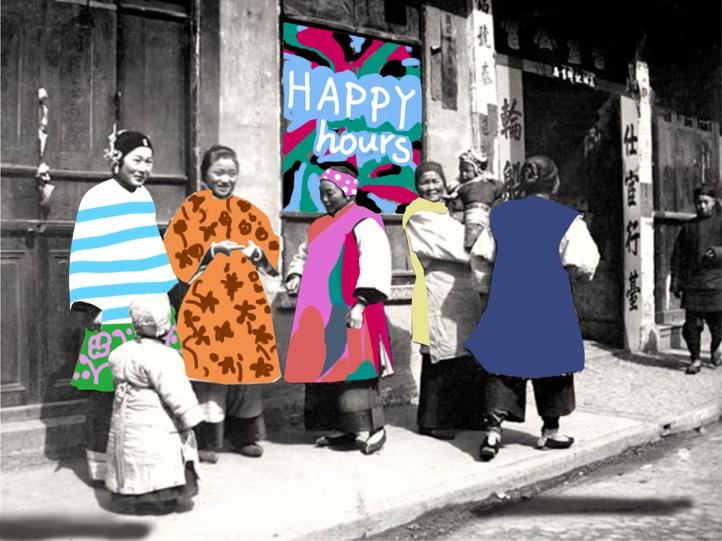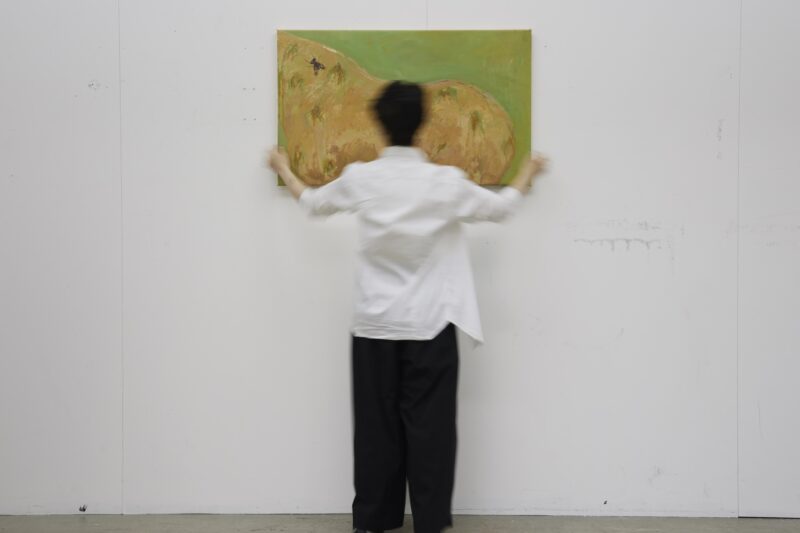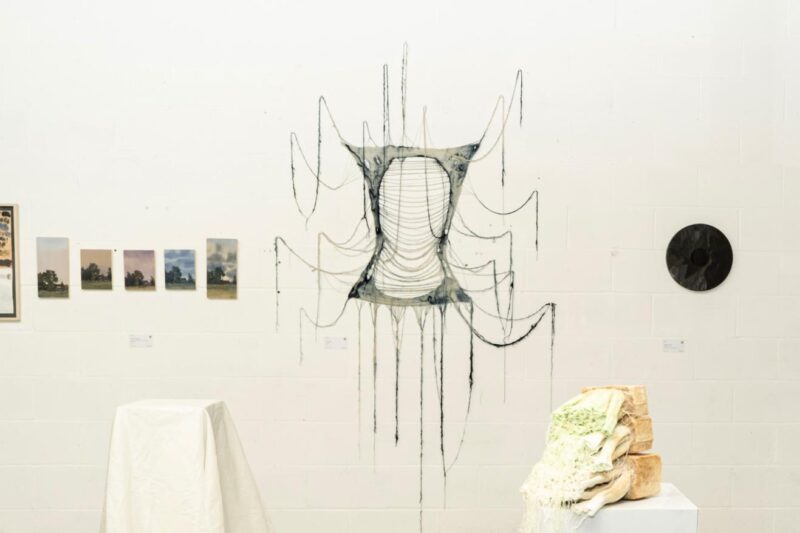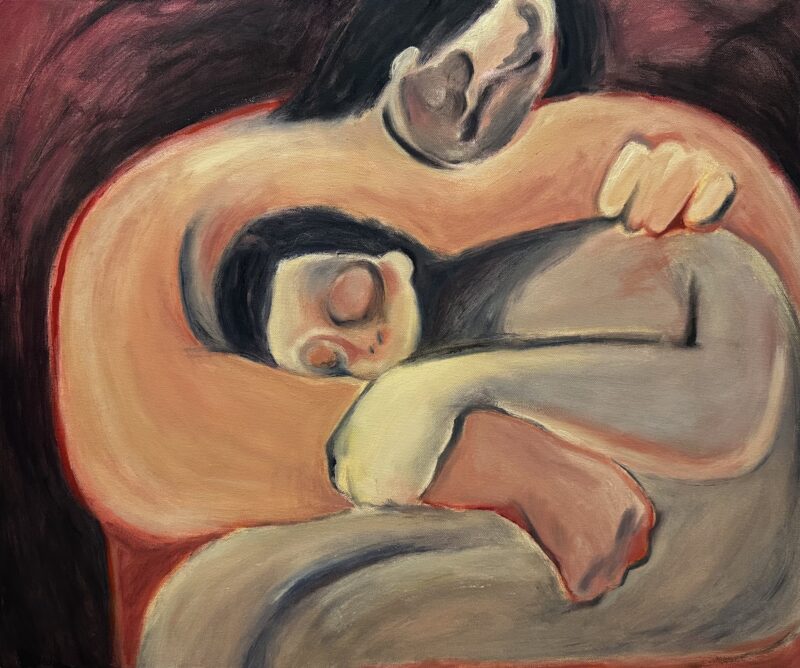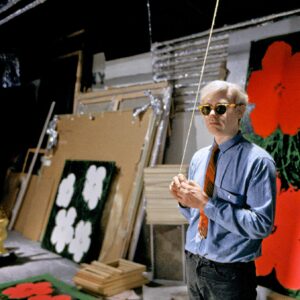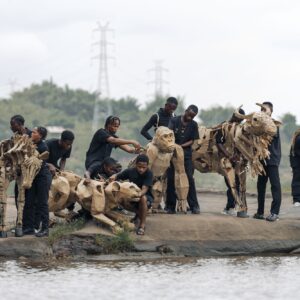In the evolving landscape of contemporary art, where the fusion of tradition and innovation continuously reshapes creative boundaries, Jing Wu’s work stands as a compelling exploration of cultural transformation. His artistic practice, spanning painting, digital manipulation, and installation, engages in a continuous deconstruction and reconstruction of visual narratives. By merging hand-drawn techniques with digital interventions, Jing challenges the notion of fixed artistic meaning, allowing history, symbolism, and technology to coexist in fluid, ever-changing compositions.
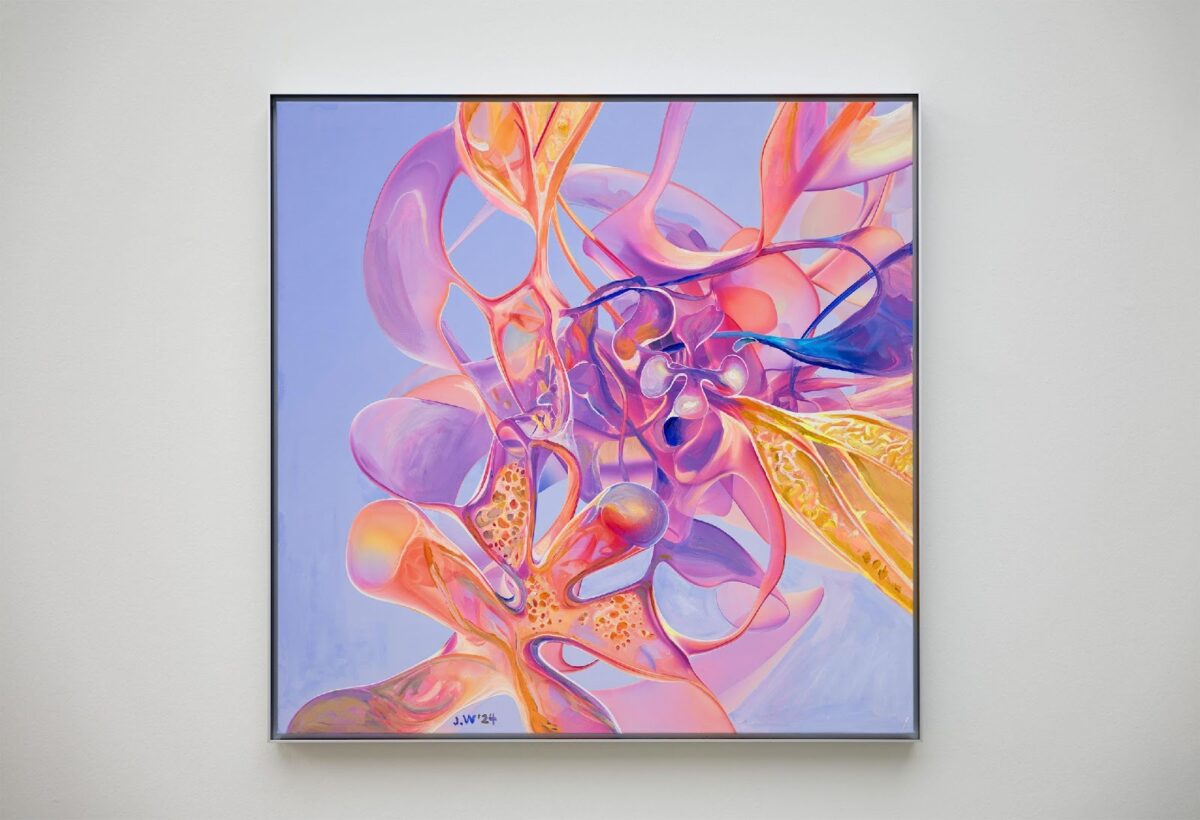
One of the most striking aspects of Jing’s work is his ability to blend multiple media, using the traditional alongside the contemporary to explore deeper philosophical and cultural dialogues. His work speaks not only to the past but also to the future, offering a perspective that acknowledges history while embracing the potential of new technologies. In this sense, his practice transcends the constraints of any one medium or ideology, positioning him at the forefront of a new wave of artists who work at the intersection of the analog and digital worlds.
In his Symbiosis series, Jing reimagines the natural world, using botanical forms as a foundation for abstract exploration. The series presents a collection of organic shapes transformed into geometric patterns, where the fluidity of nature is contrasted with the rigidity of algorithmic design. The palette is dominated by earthy tones—greens, ochres, and browns—interwoven with vibrant, synthetic colors like electric cyan and iridescent purples. These hues suggest a synthesis between the natural and the artificial, reflecting the tension between organic imperfection and technological precision.
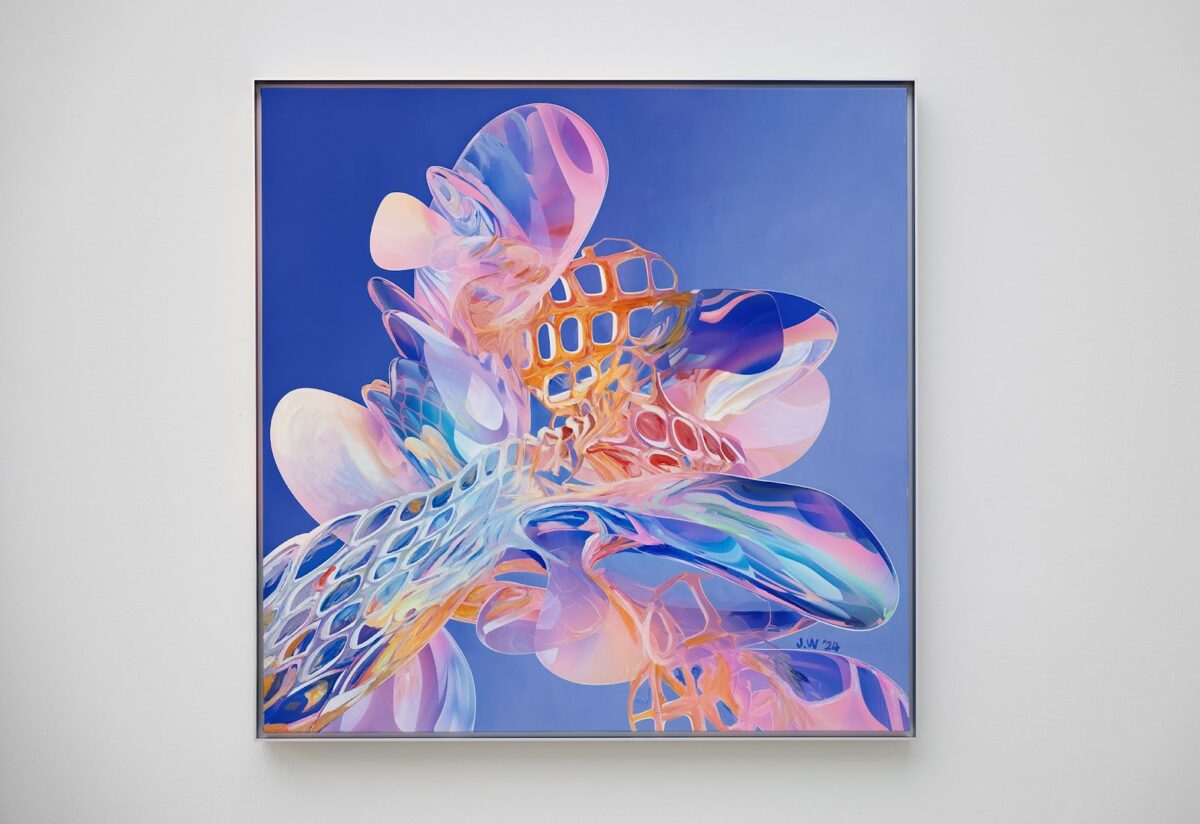
In Symbiosis, Jing explores the idea of growth and evolution, not just in nature but also in the process of artistic creation. The hand-drawn organic forms and the algorithmically generated structures coalesce into a visual language that suggests nature’s adaptability through human intervention. The dynamic compositions evokes a sense of constant evolution, where the boundaries between the natural world and the digital realm are blurred. However, the use of digital tools in the creation of these works raises important questions about the authenticity of nature. While the algorithmic precision of the forms is impressive, it also risks sanitizing the 2024 Symbiosis series, Mix Media chaos and unpredictability that are intrinsic to the natural world. Is the beauty of nature in its imperfection, or does Jing’s digital reimagining offer a more idealized, controlled vision of growth? This tension between abstraction and representation creates a powerful philosophical underpinning for the work, but one might question whether the series achieves a full resolution of this conceptual duality.
With the Overlap series, Jing utilizes archival photographs, layering them with digital distortions that both obscure and enhance the original imagery. The result is a dreamlike composition that hovers between the tangible and the intangible, where faces dissolve into glitch-like distortions and brushstrokes morph into sharp-edged digital lines. The use of a muted, sepia-toned color palette—reminiscent of aged photographs—is juxtaposed with bursts of high-contrast light and shadow, creating a disorienting tension that speaks to the fragility and malleability of memory. The hand-drawn textures, scanned and reassembled digitally, create an uncanny blend of organic imperfection and mechanical precision, underscoring the artificial nature of the historical narratives being presented.
This manipulation of memory and history invites the viewer to consider how cultural artifacts are shaped not only by time but also by the mechanisms through which they are transmitted and preserved. Overlap plays with the idea of history as a fluid construct, a narrative that is subject to interpretation and transformation. The artist’s ability to balance abstraction with realism evokes comparisons to the work of Gerhard Richter, whose blurred photo-paintings similarly address the uncertainty of historical representation. While Overlap is undeniably sophisticated in its aesthetic approach, one might argue that its conceptual territory is not entirely new. The dialogue between past and present, between history and its reimagining, is a well-trodden path in contemporary art, raising the question of whether Jing’s work adds a new layer to this ongoing conversation or simply refines a familiar discourse.
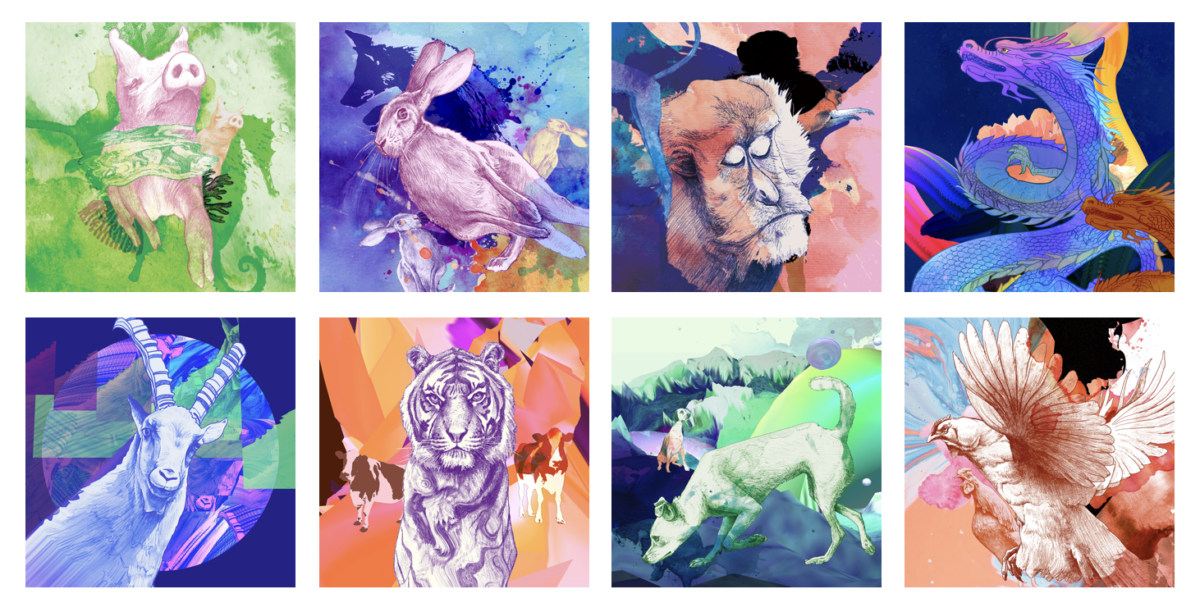
In The 12 Breaking Out Animals, Jing shifts his focus to reinterpreting cultural symbols. The work takes the traditional Chinese zodiac and reimagines each animal within algorithmically generated, surreal environments. The figures, once static and emblematic of ancient folklore, now appear in motion, fragmented and reconstructed within futuristic, shifting spaces. The colors—electric blues, neon oranges, and metallic silvers—are strikingly artificial, creating a visual tension that pulls the animals away from their symbolic origins and places them firmly within a digitally augmented world. The juxtaposition of these bold, synthetic hues against softer, more organic shapes highlights the contrast between nature and technology, tradition and innovation.
Through this digital deconstruction, Jing challenges the notion of cultural symbols as fixed, immutable entities. The animals no longer serve as mere representations of their mythological roles but are transformed into dynamic, evolving creatures, subject to the same forces of change and reinvention that define contemporary culture. The work speaks to a broader, global conversation about identity in the digital age, where traditions are increasingly fluid and open to reinterpretation. The use of algorithmic randomness in the creation of these environments adds an element of unpredictability, suggesting that cultural heritage is not something to be preserved intact but rather something that must continually evolve. Yet, one might critique this approach for its potential detachment from the original cultural significance of the symbols. By relying heavily on digital manipulation, does Jing risk stripping these figures of their historical weight and reducing them to aesthetic elements in a new technological landscape? The challenge, then, lies in whether this transformation of cultural icons is a form of liberation or whether it diminishes their inherent power and meaning.
Jing’s work, taken as a whole, demonstrates his ability to navigate between artistic preservation and reinvention. He does not simply revisit cultural history or memory; he reconstructs it, creating new dialogues where history, tradition, and technology meet. Yet, while his technical skill and conceptual depth are undeniable, there is an underlying tension in his reliance on digital processes. By manipulating images and symbols through algorithmic interventions, does he risk losing the raw, lived experiences that these elements represent? Does the digital medium, with its focus on precision and replication, dilute the emotional and cultural richness inherent in the original forms?
Ultimately, Jing’s art invites viewers into a space of transformation and reflection, where historical narratives are not merely reimagined but actively reconstructed. His work challenges the viewer to consider how meaning in art—and in life—evolves over time, shaped by new technologies, shifting cultural identities, and the ongoing interplay between tradition and innovation. Jing’s practice does not simply document change; it participates in the creation of that change, suggesting that the future of art lies in its ability to continuously reinvent itself.
